This Painter Hid A Mysterious Message In ‘The Scream’ That’s Scarier Than The Actual Painting
Uncovering a century-old secret, experts have now examined the scrawled message hidden in the corner of the iconic painting, The Scream. With its highly distorted shapes and unsettling expression, the painting has long held a mysterious essence, and the newly discovered message only further intensifies its haunting quality.
Could the central figure in the painting be crying for help, or is the answer to its mystery lurking in the corner?
The Agony of a Soul in Hell
Witness the agony of a soul on the brink of despair! An image as evocative as any ever put to canvas, the scene below a blood-red sky is a sight to behold. A figure stands in an almost alien-like form, its hands clasped to its ears as its ears are filled with the horror of its emerging hellscape.

Source: YouTube/Sotheby's
A look of sheer terror is etched on its face as if it is already feeling the crushing despair of its fate. Behold this powerful vision and feel the anguish of a soul in hell.
Capturing the Agony of Suffering - Edvard Munch's The Scream
One fleeting glance into Edvard Munch’s iconic painting, The Scream, is enough to give a glimpse into the mind of a madman. For years, this expressionist masterpiece has become a symbol of the suffering and anxiety of the modern age.
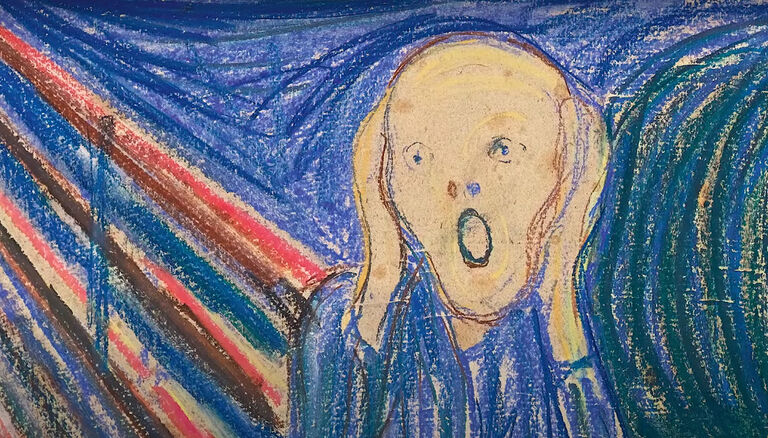
Source: YouTube/Sotheby's
As highlighted by Smithsonian Magazine in 2006, Munch and his painting have “defined how we see our own age – wracked with worry and insecurity.” Truly, The Scream captures the agony of suffering in a way that will never be forgotten.
Channeling the Chaos: The Impact of The Scream
The dawn of the 20th century saw a dramatic shift in popular thought, as minds around the world began to turn inwards to explore our subjective experiences. Pioneers such as Sigmund Freud and Friedrich Nietzche were at the forefront of this movement, and their groundbreaking work is reflected in the iconic painting The Scream.
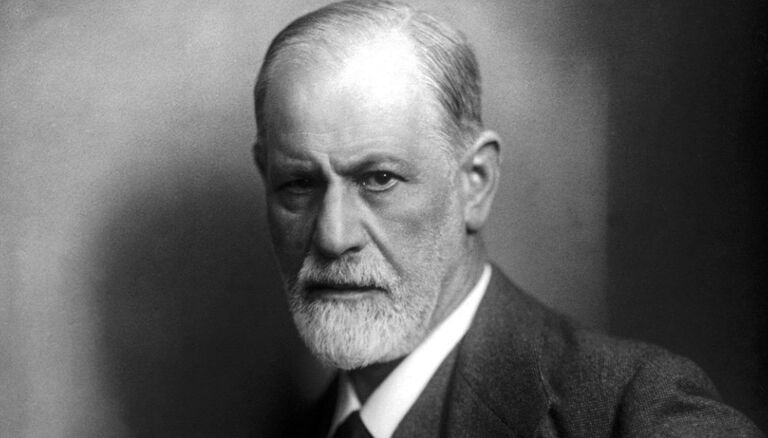
Source: drlindapearson/ Twitter
Through this artwork, Edvard Munch evoked a mind engulfed by chaos, turmoil, and apprehension. As a result, The Scream has become an enduring symbol of existential dread.
Capturing Dread: The Inspiration Behind Munch's The Scream
On a walk around Oslo with two friends in 1892, the artist Munch felt a sense of dread that was completely unexplainable. He was overwhelmed with sickness and stopped to rest. At that moment, he felt the world turn in a way that was beyond his control.

Source: Nasjonalbiblioteket
This experience would soon be immortalized, as Munch painted the first version of The Scream in 1893. Through his art, Munch captured the dread and terror he felt during that fateful walk – conveying an emotion that is still widely understood today.
The Birth of an Iconic Masterpiece
As Munch looked out over the picturesque fjord, he was suddenly filled with an indescribable emotion. The sun was setting and the sky was painted with a vibrant hue of red, as though the clouds were doused in blood.
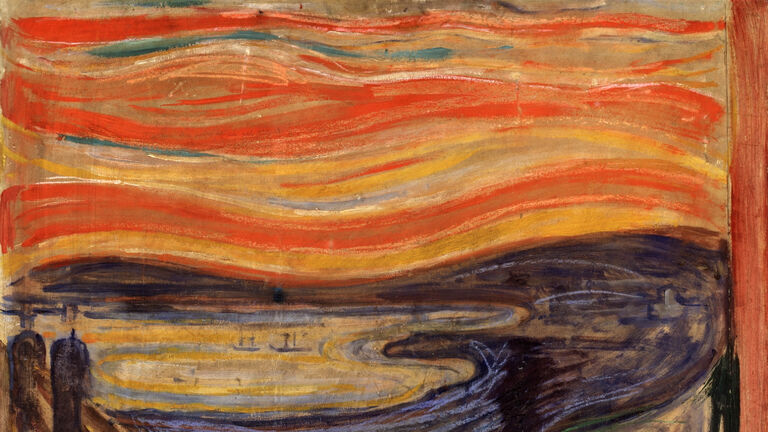
Source: dataisbeautiful/ Reddit
This inspired Munch to capture the moment and paint what he felt – a silent, yet powerful scream that resonated through the environment. This breathtaking work of art was the birth of The Scream – an iconic masterpiece that has since been admired and celebrated around the world.
Edvard Munch: A Life of Mental Torture
Edvard Munch’s painting, The Scream, was more than just a passing interest into the terrifying. From a young age, Munch was no stranger to pain and tragedy. When he was only five years old, his mother died from consumption. Later, he would also lose his brother and sister to the same disease.
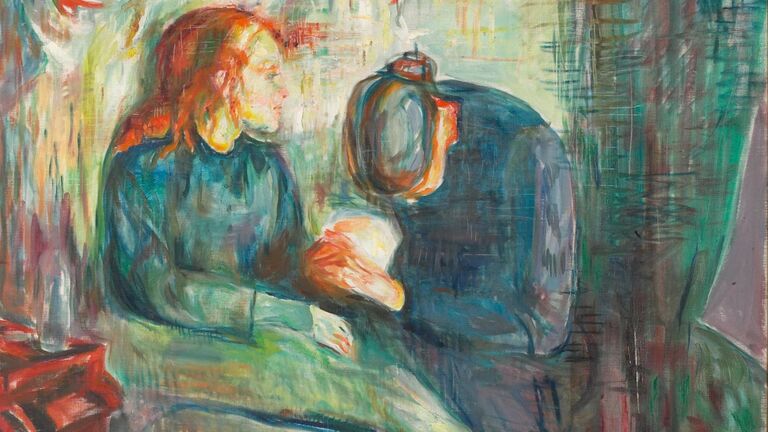
Source: Alamy
These events had a deep impact on Munch and his art, as reflected in his early work, The Sick Child. Despite the hardship, Munch was able to create a legacy that has stood the test of time.
Edvard Munch's Inner Demons
Edvard Munch’s life was filled with tragedy as he lost both his mother and sister at a young age. However, it was his inner demons that had a greater influence on his works.
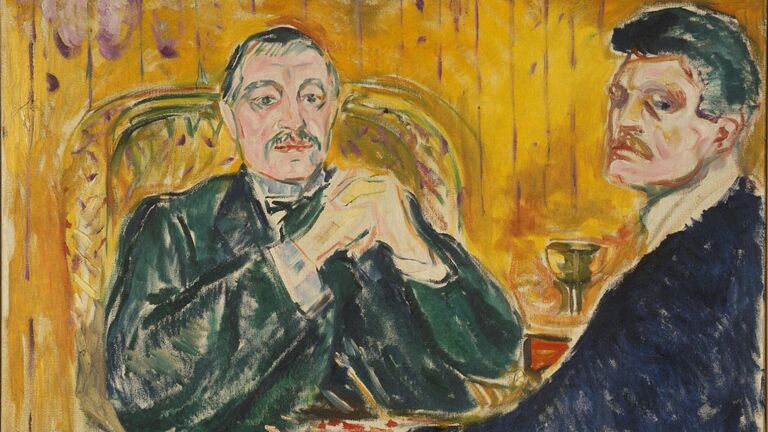
Source: wikidata.org
He wrote of a “black angel that stood at my cradle” – his mental illness that took a heavy toll on his family, especially his sister Laura, who spent most of her life confined in institutions. Munch’s struggles with mental health are reflected in his artwork, making him one of the most important figures in the history of art.
Edvard Munch: A Journey of Self-Expression
Edvard Munch had a unique ability to express his emotions through his artwork, which made him a renowned celebrity in the art world. His iconic painting, “The Scream”, was part of a series of works he called “the Frieze of Life”.
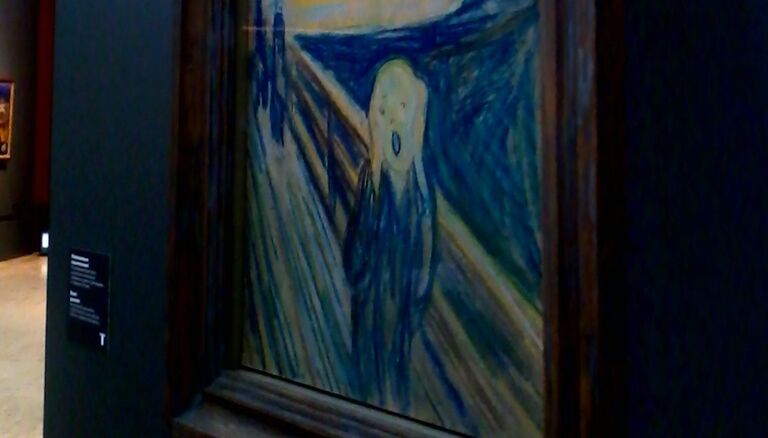
Source: Oleg Bkhambri (Voltmetro)
In 1908, Munch checked himself into an institution for a year, however, his willingness to expose his innermost feelings on canvas left a lasting impact on the art world. His works continue to be admired by generations of art lovers, reminding us of the power of creative expression.
Rewriting the Rules of Art: "The Scream"
For centuries, painting has been focused on the pursuit of beauty and harmony. Da Vinci’s Mona Lisa, for example, is a timeless classic celebrated for its serenity and self-control. But then came “The Scream” – a masterpiece by Edvard Munch that changed the rules of art forever.
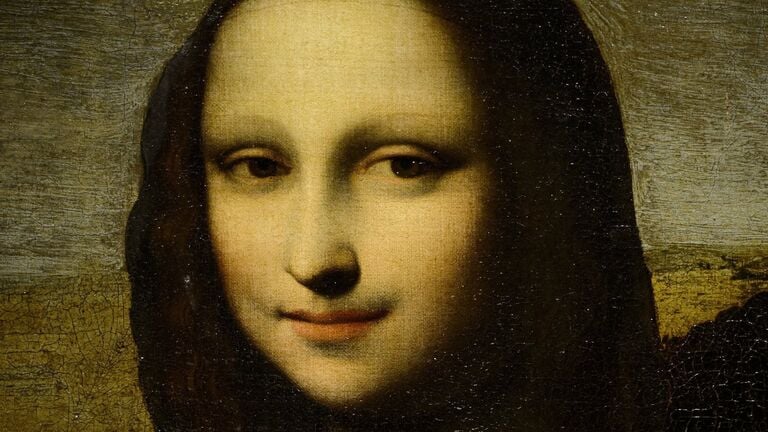
Source: FABRICE COFFRINI/AFP/GettyImages
This painting depicted humanity’s wildest and darkest impulses, rejecting the conventional idea of art as something that is only beautiful. Through this, Munch paved the way for a whole new perception of art.
From The Scream to Expressionism
Edvard Munch’s iconic painting The Scream is said to be one of the most recognizable works of art in the world. Its influence stretches far beyond its fame. After its release, countless young artists were inspired by Munch’s signature style, leading to the development of the Expressionist movement in Germany.
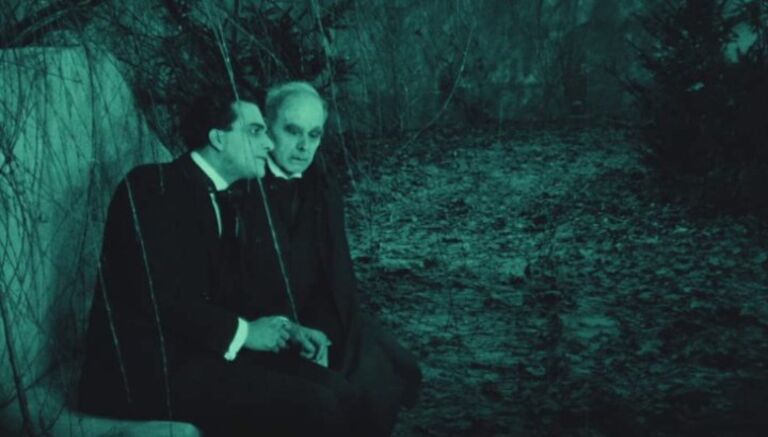
Source: Alamy
This subjective style was even adopted by filmmakers, most notably in the 1920s The Cabinet of Dr. Caligari. Expressionism remains one of the most influential art styles in history, and it all started with Munch and The Scream.
Celebrating the Impact of Edvard Munch
Edvard Munch’s iconic painting ‘The Scream’ continues to leave its mark on pop-culture. It inspired horror films like 1996’s hit movie ‘Scream’, with the killer wearing a mask modeled on Munch’s work.
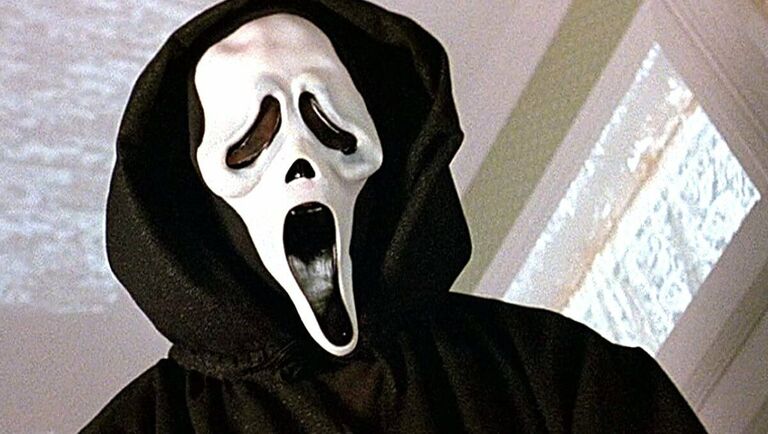
Source: GuyverI/ Twitter
The ‘face screaming in fear’ emoji also bears a striking resemblance to the painting, allowing people to express their own angst in a single character text message. It is clear that Munch’s art will remain relevant for years to come, as it continues to capture the emotions of the human experience.
Unearth the Hidden Art of Munch: Unlocking a Wealth of Artwork
The iconic figure of art, The Scream, is just one of the many works of Edvard Munch. He produced an extensive body of work throughout his life, and following his death in 1944, more than 1000 unreleased paintings were discovered in his home.
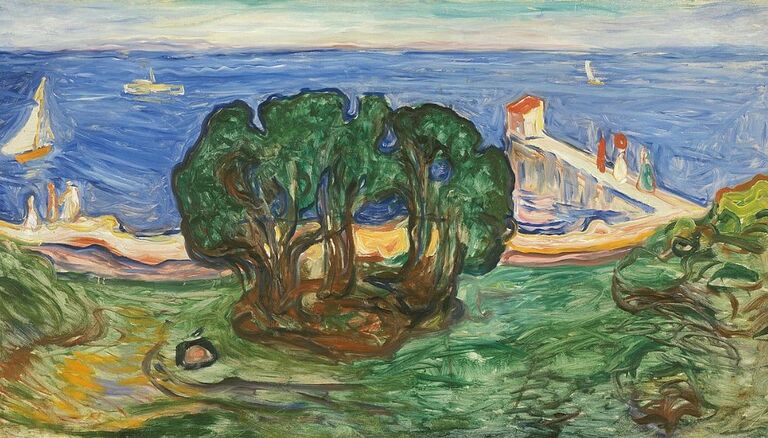
Source: Alamy
From the streets of Norway to galleries all over the world, Munch’s art continues to captivate viewers with its emotion and energy. Uncover the hidden art of Munch and explore a wealth of artwork that has made him one of the most renowned painters in history.
Captivating Variations of Edvard Munch’s Iconic ‘Scream’
Edvard Munch’s iconic artwork ‘The Scream’ has captivated art enthusiasts for decades. The Norwegian artist produced four versions of this masterpiece over a period of 17 years, which are currently on display in public and private collections.
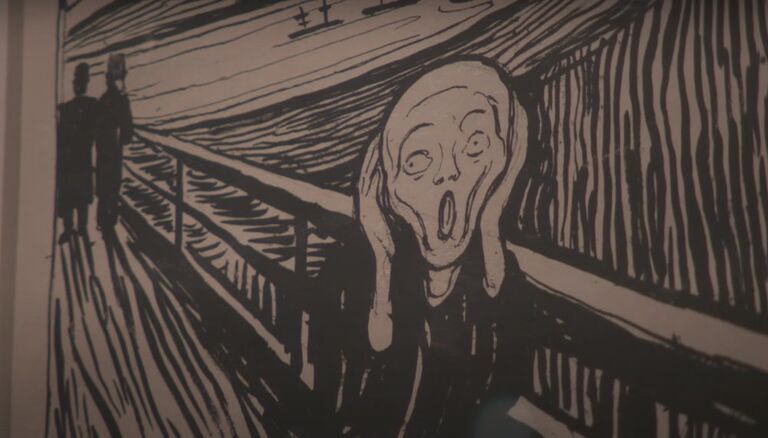
Source: YouTube/ITV News
Each of these artworks showcases Munch’s energized style of work, making them even more memorable. From the bright hues of the 1895 version to the charcoal-on-board depiction of 1910, The Scream series is a testament to the artist’s creative genius.
Unraveling the Mystery: Who Painted the First Iconic Artwork?
Is it the tempera painting from 1893 or the crayon etching from the same year? This is the burning question that art enthusiasts have been debating for years. Some believe the most recognizable version of the famed painting – tempera on a cardboard base – is the original.
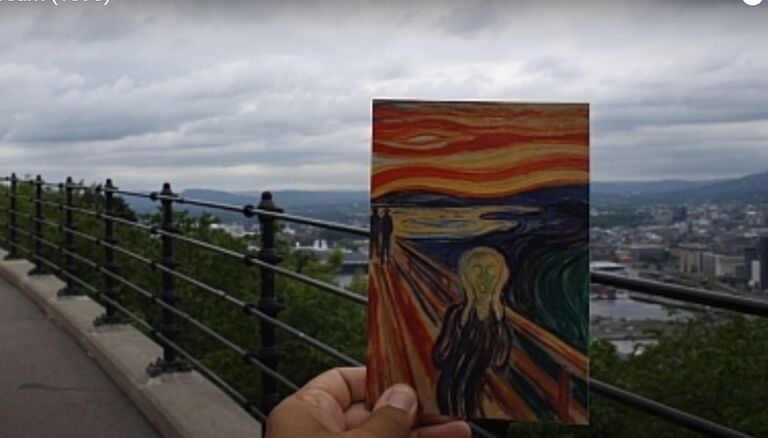
Source: YouTube/Art History Online
Others, however, argue that a crayon etching from the same year is actually the premiere copy due to its rougher style. Who will prevail in this long-standing debate? Only time will tell!
Munch's Iconic Masterpieces in His Hometown
In his hometown of Oslo, you can find not one, but three versions of one of the most iconic masterpieces of all time: Munch’s ‘The Scream’. The first is housed in the Oslo National Gallery, while the other two are in the Munch Museum.
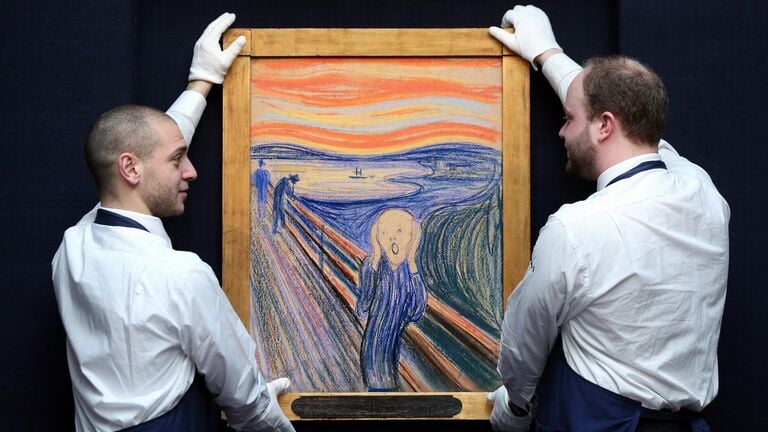
Source: Oli Scarff/Getty Images
One of these two is a tempera copy painted by Munch himself in 1910, most likely as a means of making a quick profit. Experience Munch’s legendary work up close and see why it is still so revered even today!
The Mysterious Thefts of The Scream
From the very beginning, The Scream has been shrouded in darkness and mystery. Its iconic artworks have been the target of two separate thefts in a span of 30 years, leaving dark ripples throughout the world. It is a story of dread, but also one of resilience.
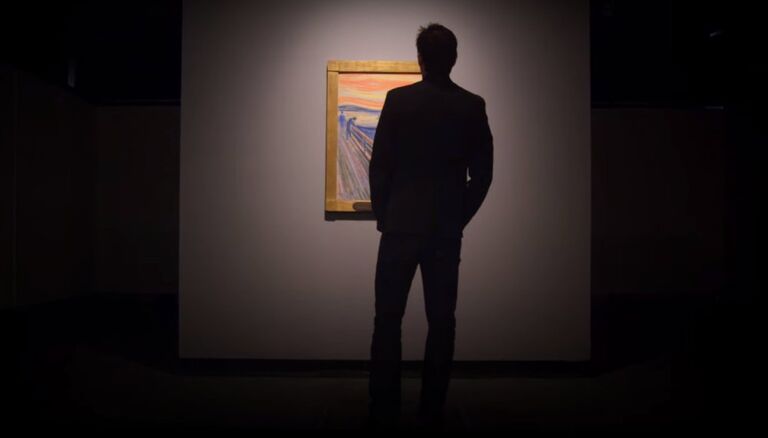
Source: YouTube/Sotheby's
While copies of The Scream have suffered strange fates, they have been able to survive and be admired by millions of art enthusiasts. In a way, the thefts of The Scream have only added to its legacy.
1994 Heist of Masterwork From the National Gallery
In 1994, the National Gallery was at the receiving end of a daring heist when the tempera masterpiece was stolen from its secure resting place. The burglars had an easy time, as they simply took the artwork away through a window.
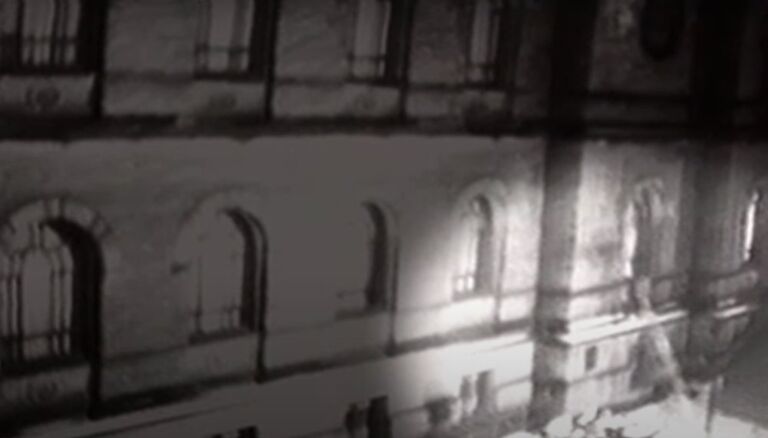
Source: YouTube
To add insult to injury, they even left a note behind to thank the museum staff for their lax security. This act of theft shook the art world to its core and highlighted the need for increased security measures to protect valuable artwork.
A Not-So-Daring Heist Gone Awry
In 2004, a strange incident occurred when masked gunmen entered the Munch Museum and took the artist’s 1910 tempera piece and his 1894 study Madonna. However, the criminals’ daring heist went awry when one of the paintings was dropped during their hasty escape.
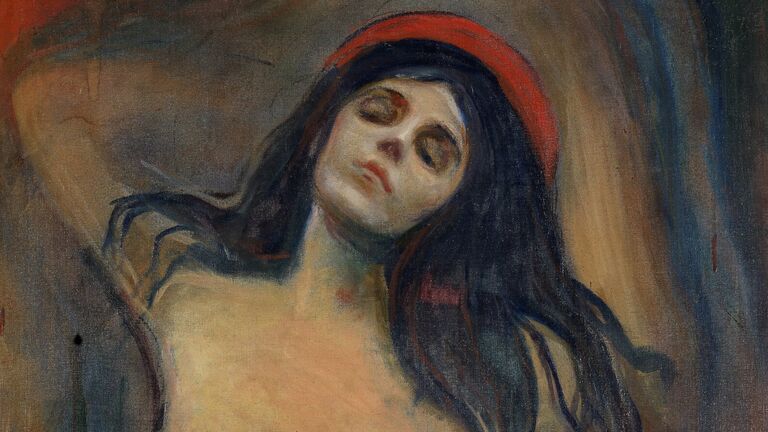
Source: Edvard Munch - {{PD-US}}
The clumsiness of the burglars was certainly one for the books, as the authorities quickly recovered the dropped artwork and arrested the culprits. This peculiar incident was a reminder that even the most daring criminals can make mistakes – and justice will be served.
Unraveling the Mystery of the Stolen “The Scream” Copies
What mystery lies behind the two stolen copies of “The Scream”? Both copies were eventually returned to their rightful places, but why were they stolen in the first place?

Source: YouTube/ITV News
Some experts believe that the second theft was not motivated by money, but rather to distract the police from a murder investigation. The true motive behind the thefts remains as cryptic as the iconic painting itself. Join us as we unravel the mystery of the stolen “The Scream” copies.
Spot the Difference: Uncovering the Mystery of The Scream
Have you ever heard of The Scream? This iconic painting by Norwegian artist Edvard Munch has been subject to multiple thefts over the years, yet museum staff still insist on displaying it. If you’re an art lover, now’s your chance to visit Oslo and explore the three versions of The Scream in person.

Source: YouTube/ITV News
While some are easier to find than others, they all offer a unique insight into the brilliance of Munch’s artwork. Embark on your journey today and uncover the mystery of The Scream!
Unveiling the Colorful Fourth Copy of The Scream
Have you ever heard of the iconic painting ‘The Scream’? You’ll be surprised to know that there is a much more colorful version of this masterpiece which has been in private collections since 1937.
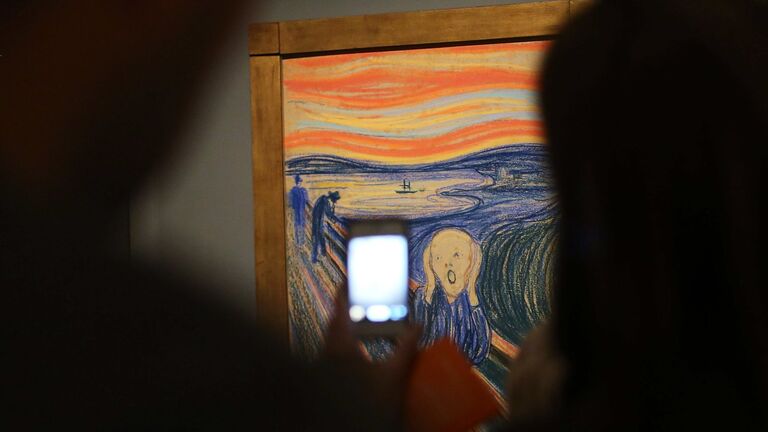
Source: Spencer Platt/Getty Images
In 2012, it was sold for an astonishing $120 million to financier Leon Black. But before it was transferred to private hands, it was briefly displayed at The Museum of Modern Art (MoMA) in New York. So, if you ever get a chance, don’t miss out on viewing this colorful version of the classic painting.
Unlocking the Secrets Behind Munch's Masterpiece
Edvard Munch’s iconic “The Scream” is one of the most recognizable and celebrated works of art in history. But what makes this particular version so special? It isn’t the price tag or even the distinctive colors Munch used, but rather the extra insight the artist offered.
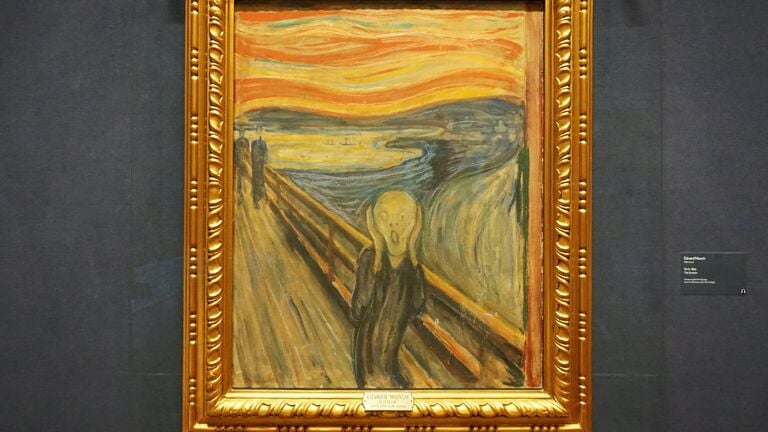
Source: Mario Duran-Ortiz
Hidden in the bottom of the frame was a poem that revealed the inspiration behind the painting. By unlocking this secret, we gain a deeper understanding of Munch and the masterpiece he created.
The Great Scream in Nature: Revisiting Munch's Ghastly Image
Edvard Munch’s iconic painting “The Scream” is a chilling representation of the artist’s emotional experience. In his own words, Munch described the moments that preceded the creation of this ghastly image.
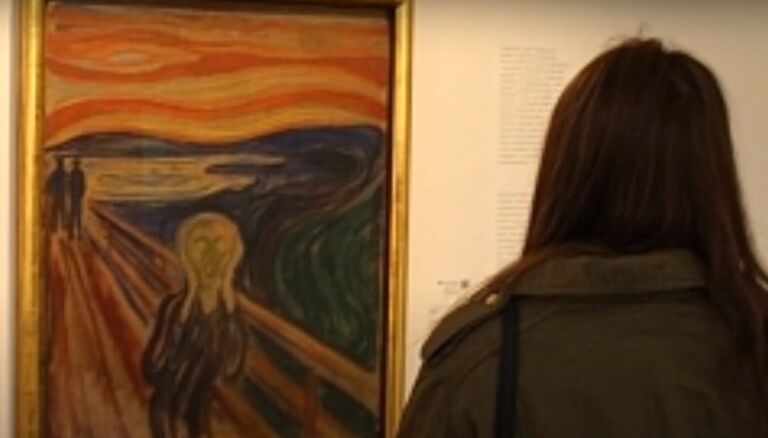
Source: YouTube/Art History Online
He recounts a sky turning a bloody red, with tongues of fire hanging in the air, and a feeling of great anxiety that overwhelmed him and led to a sensation of a great scream in nature. Through his elegant prose, Munch invites us to share his experience and reflect on the emotional power of his work.
Uncovering the Mystery Behind Munch's "The Scream"
Have you ever heard of the mysterious poem hidden away in Munch’s iconic painting, “The Scream”? It’s a perplexing piece of graffiti that has been a source of intrigue for many, but due to its private ownership, the haunting poem has remained a mystery, until now.
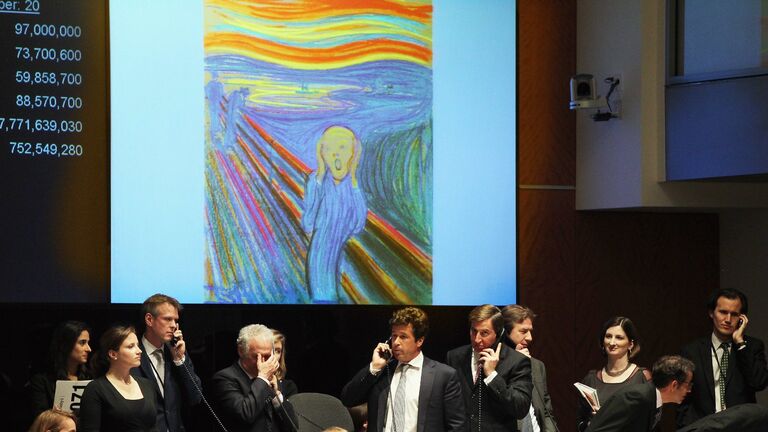
Source: Mario Tama/Getty Images
As it turns out, Munch’s original tempera painting contains a unique transcription that provides the bluntest explanation of this iconic artwork ever made. Uncover the secrets of “The Scream” and discover the hidden story behind this timeless masterpiece.
Unveiling the Mystery of a Century-Old Scrawl
For more than a century, the origin of a cryptic message scrawled in the top left corner of a painting remained a mystery. Discovered in 1904, the graffiti read, “Can only have been painted by a madman.” Experts have been in wild disagreement ever since, unable to agree on its origin.
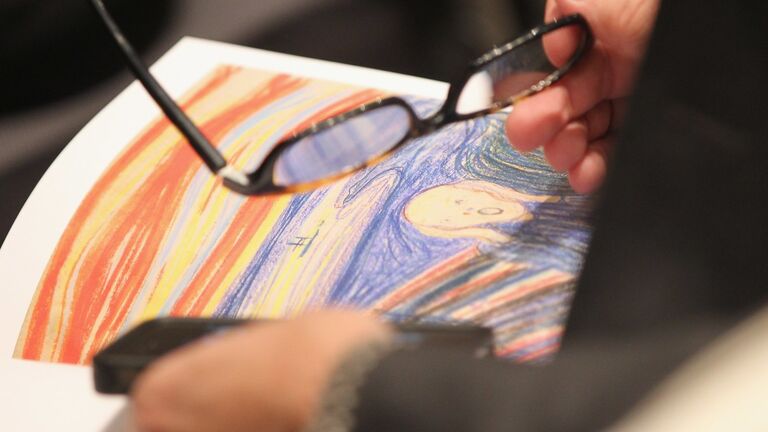
Source: Mario Tama/Getty Images
What could this century-old scrawl mean? Was it made by the painter themselves? Or by a bystander, critiquing the artwork? Unravel the mystery of the madman’s message and discover the truth behind its creation.
Mystery of the Century-Old Graffiti Finally Solved
For over 100 years, a peculiar phrase inscribed on the side of Edvard Munch’s iconic painting ‘The Scream’ had been a source of intrigue and confusion. Was it the work of an audacious vandal, or had Munch himself written it in a moment of self-deprecation?
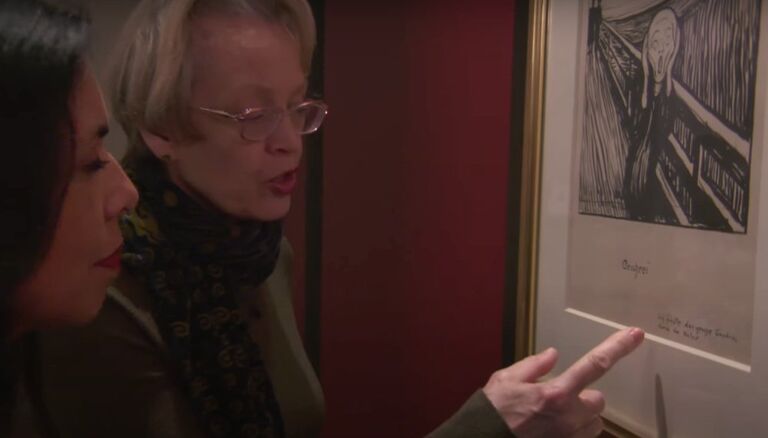
Source: YouTube/ITV News
After much scrutiny and investigation, the mystery of this century-old graffiti was finally solved. It turns out, it was Munch who had left the enigmatic words, a fact that would have shocked even the most devoted of fans.
Uncovering a Century-Old Secret: The Handwriting of Edvard Munch
After examining a mysterious message with infrared devices and samples of Edvard Munch’s handwriting, staff at the National Museum of Norway made an astonishing discovery in 2021. Curator Mai Britt Guleng announced to the press that “the writing is without a doubt Munch’s own.”

Source: Borre Hostland/The National Museum of Norway
This century-old secret had been hiding in plain sight, and now it was finally revealed. It was a remarkable moment that shed new light on the life and work of one of the world’s most renowned artists.
Munch's Defacement of The Scream: Was He Warning Future Artists?
Did Edvard Munch, the artist behind the iconic painting, The Scream, really deface his own work? It seems so, but what did he wish to convey by doing so? Was he dissatisfied with the finished product? Did he despise what it made him see in himself?
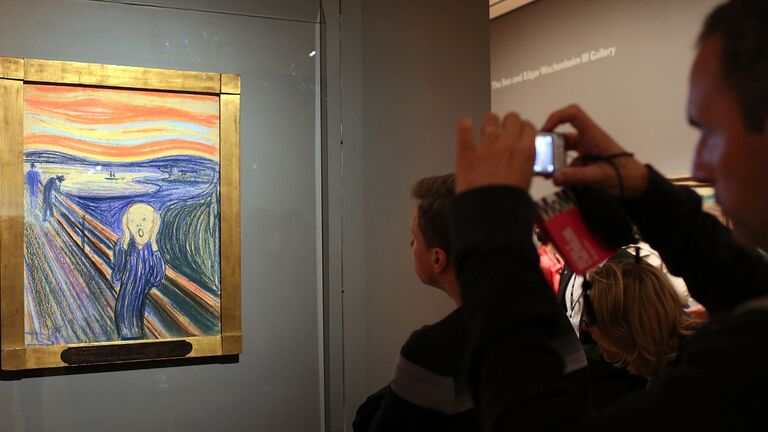
Source: Spencer Platt/Getty Images
Or was he trying to alert future artists to not take inspiration from his work? Whatever his motives were, Munch’s decision to mar his own work is shrouded in mystery, leaving us to ponder its true meaning.
An Artist's Controversial Masterpiece: The Scream
Edvard Munch’s iconic painting, The Scream, is now seen as one of the greatest works of art of all time. However, when it was first unveiled in Oslo in 1895, it was met with mixed reviews.
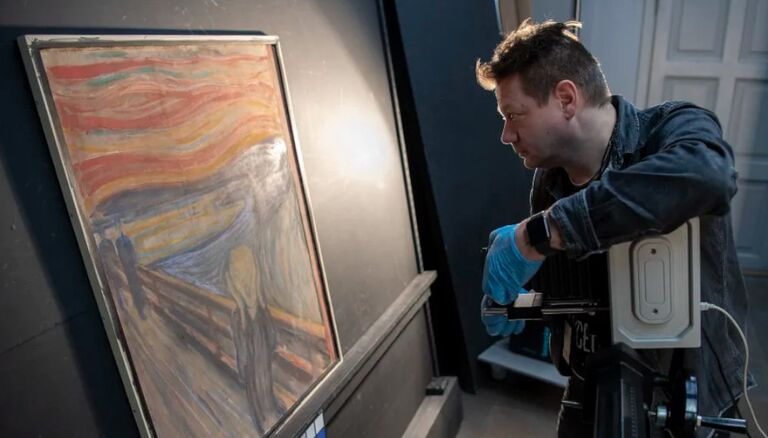
Source: Annar Bjorgli/The National Musuem
Many critics were not particularly kind to the artist, and it appears that the painting was a passionate response to their harsh words. Whether you love it or hate it, The Scream stands as a powerful piece of artwork that continues to captivate audiences around the world.
A Night of Criticism for Munch
It was a night of criticism for artist Edvard Munch in the 1890s. After the screening of his iconic artwork The Scream, Munch attended an open discussion where the audience could express their views on his artwork. Johan Scharffenberg, a fellow artist and medical student, was the one to take it to the next level.
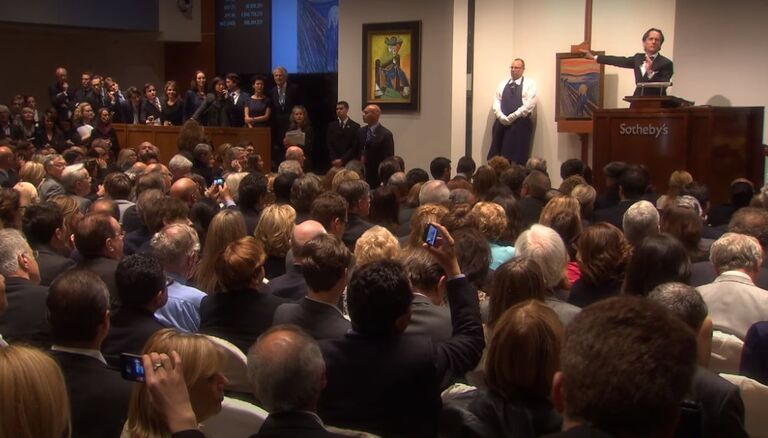
Source: YouTube/Sotheby's
He slammed the artwork, calling it frightening, and even suggested that Munch was insane. In the current era, where artists are highly respected and protected, these events are hard to imagine!
Munch's Vulnerable Irony: A Swipe at His Own Persona
Edvard Munch was offended by a claim and decided to express his feelings through his artwork. He added graffiti to his masterpiece, demonstrating his self-awareness and vulnerability. Guleng argued that this was both a way of being ironic and showing his vulnerability.
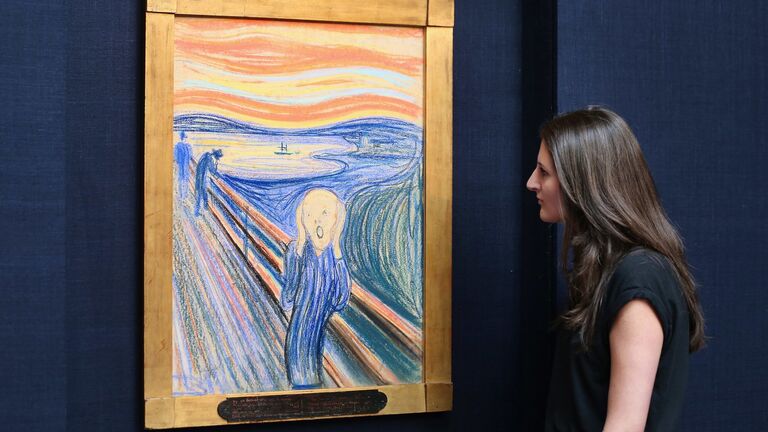
Source: Oli Scarff/Getty Images
The graffiti was his way of striking a blow to his naysayers and showing that he was not afraid to stand up for himself. Munch’s artwork was a powerful and meaningful way of expressing his feelings, making him a true pioneer of modern art.
An Insight into Munch's Pain
Edvard Munch’s flippant response to criticism of his artwork masked the deep pain he felt. In his journal, he devoted several pages to exploring the remark in detail, and it was only through The Scream that he showed himself marked by it.
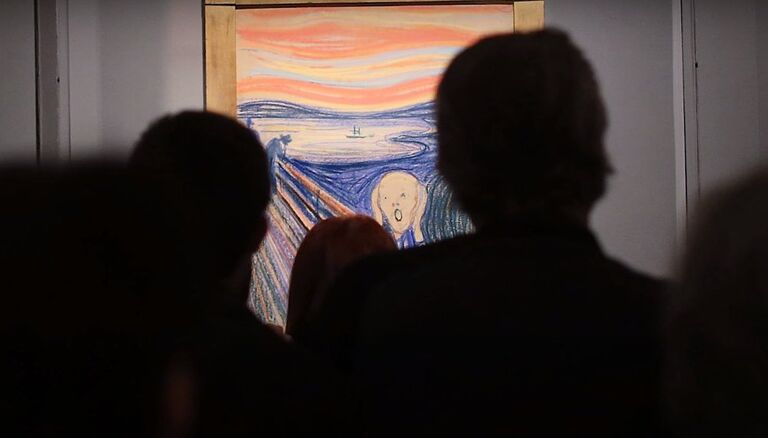
Source: YouTube/Sotheby's
In a recent study, researcher Guleng found that this was because of Munch’s family history of mental illness. By adding the inscription to the painting, Munch was ultimately displaying his vulnerability and struggle with the accusation.
Crazy Creativity: How Mental Illness Inspired Edvard Munch's Artwork
Edvard Munch was deeply offended by a jibe from a friend and fellow artist, Scharffenberg. However, deep down he would have understood the truth in the words: that his mental health struggles had a huge impact on his artwork.

Source: Fine Art Images/Heritage Images/Getty Images
He even wrote “Without anxiety and illness, I am a ship without a rudder,” showing how much his art depended on his inner turmoil. Mental health issues can be a source of pain and suffering, but as Munch’s story shows, they can also be a powerful inspiration for creativity.
Embrace Your Sufferings to Unlock Your Potential
No matter the intensity of his sufferings, the famous painter Edvard Munch saw them as a part of himself and his art. He believed that these inner struggles were essential to his creativity, saying “My fear of life is necessary to me, as is my illness.”
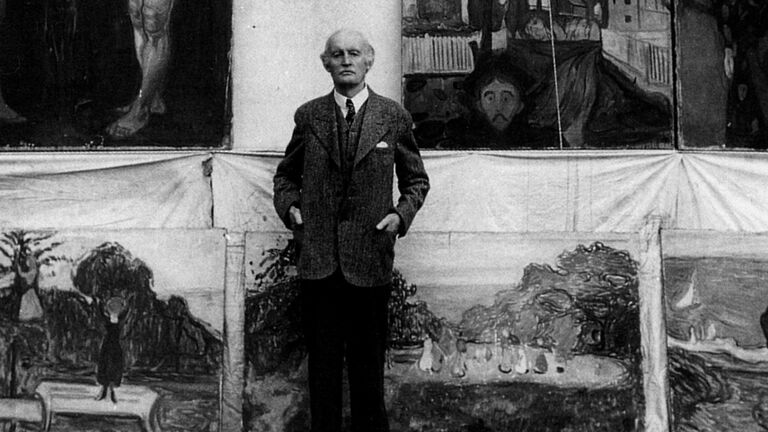
Source: APIC/Getty Images
Munch understood that his mental health issues could never be separated from his art and that to destroy them would be to destroy himself and his work. His message to all of us is clear: embrace your sufferings in order to unlock the potential within.
The Sequel to 'The Scream': Edvard Munch's Anxiety
Edvard Munch’s iconic painting The Scream gave us a glimpse into his emotional well-being, but Anxiety paints a much clearer picture. Painted in 1894, Anxiety is the follow-up to Munch’s most famous work, sharing the same themes of emotional instability, as well as the same location and perspective.

Source: Leon Neal/Getty Images
The piece gives us a deeper understanding of the artist’s mental state and his inner struggles. Through Anxiety, Munch has provided us with a powerful visual reminder of the power of art and its ability to express emotion.
Anxiety on the Canvas: A Crowd of Intrusive Stares
The iconic painting The Scream by Edward Munch has been a classic for centuries, but there’s something distinct that sets Anxiety apart. In Anxiety, a group of people occupies the foreground, with all their attention focused on the viewer.
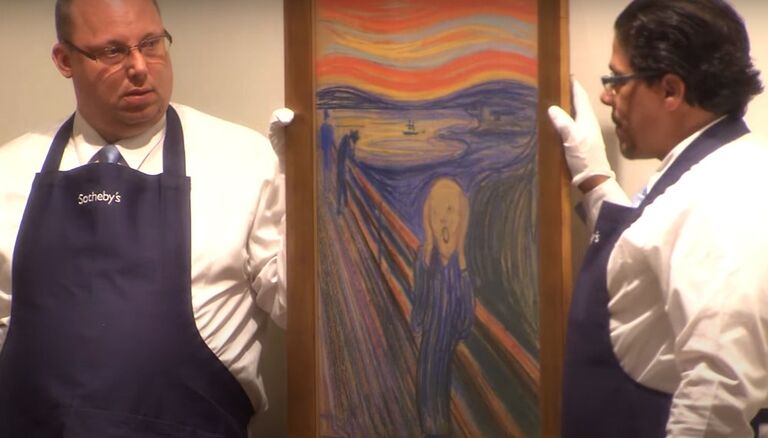
Source: YouTube/Sotheby's
Their stares are so intense that they can be overwhelming and almost suffocating. The contrast between The Scream and Anxiety makes it clear that the latter is something special – a powerful reminder of the overwhelming feeling of anxiety.
A Collective Cry of Anxiety: Munch's Iconic Paintings
Edvard Munch’s iconic painting, The Scream, is renowned for its powerful depiction of mental anguish and isolation. However, Anxiety takes this concept to the next level, portraying the same feelings as a collective.
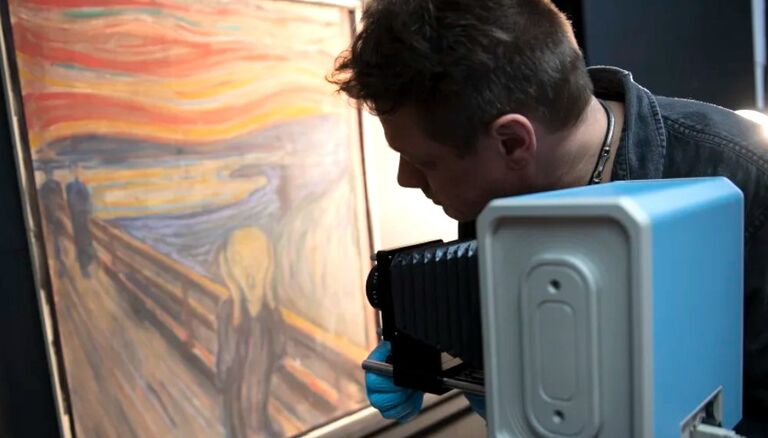
Source: Annar Bjorgli/The National Museum of Norway
This painting could also be seen as a reflection of the artist’s own experience with fame and recognition, with the figures seeming to judge the viewer, much like the critical response Munch faced. Through Anxiety, Munch has captured his feelings about being seen and judged by the world.
Munch's Search for Solitude: A Painter's Journey to Freedom
Edvard Munch’s life took an unexpected turn in 1908 when he decided to check into a sanatorium, signaling the beginning of his pursuit for a life of privacy and seclusion. For the remaining 35 years of his life, Munch chose to live in the countryside, away from the hustle and bustle of the city.
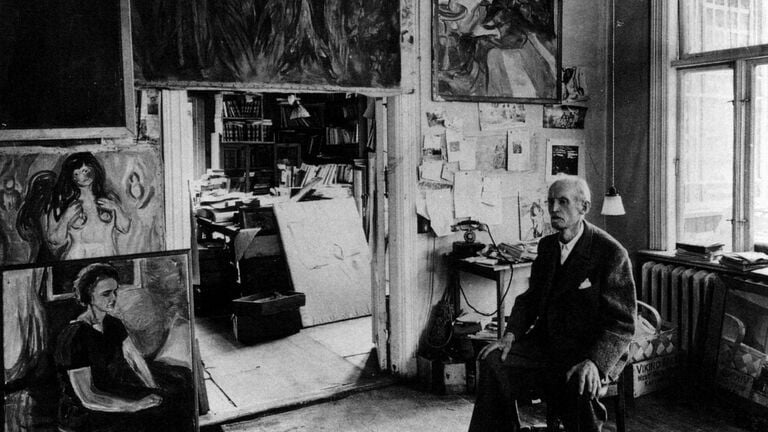
Source: APIC/Getty Images
He never married or had kids, instead, viewing his artwork as his family. Through his art and his solitude, Munch was able to find freedom and peace.
The Legacy of Edvard Munch: Opening the Conversation on Mental Health
Edvard Munch’s life may have been lonely and isolated, but it is not necessarily a tragedy. Today, more and more people are feeling comfortable discussing mental health issues, and by putting his own anxieties on canvas, Munch helped open up the conversation.
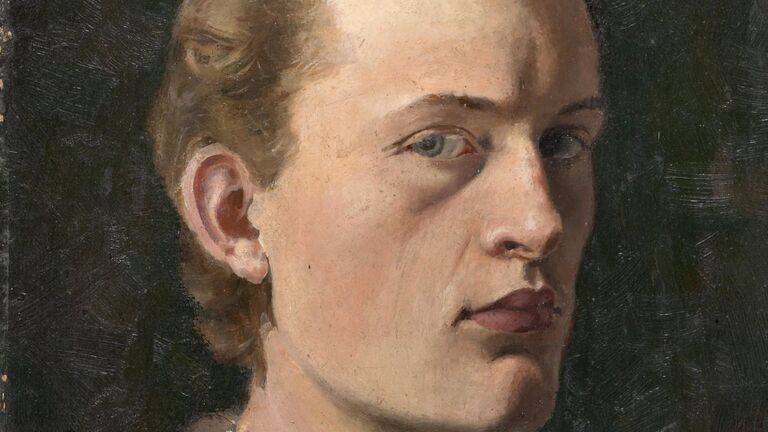
Source: Fine Art Images/Heritage Images/Getty Images
Millions of people can be thankful for the work of this “madman” and the era that allowed for such conversations. Munch’s work gives us hope that, as a society, we can continue to make progress in destigmatizing mental health and providing a safe space for individuals to talk about it.
